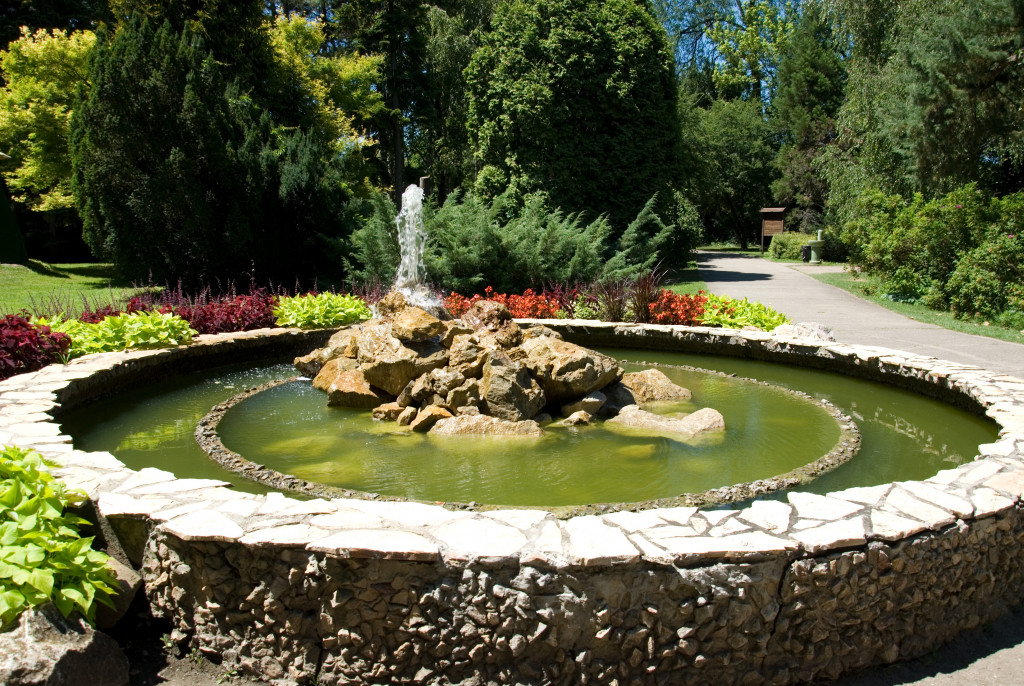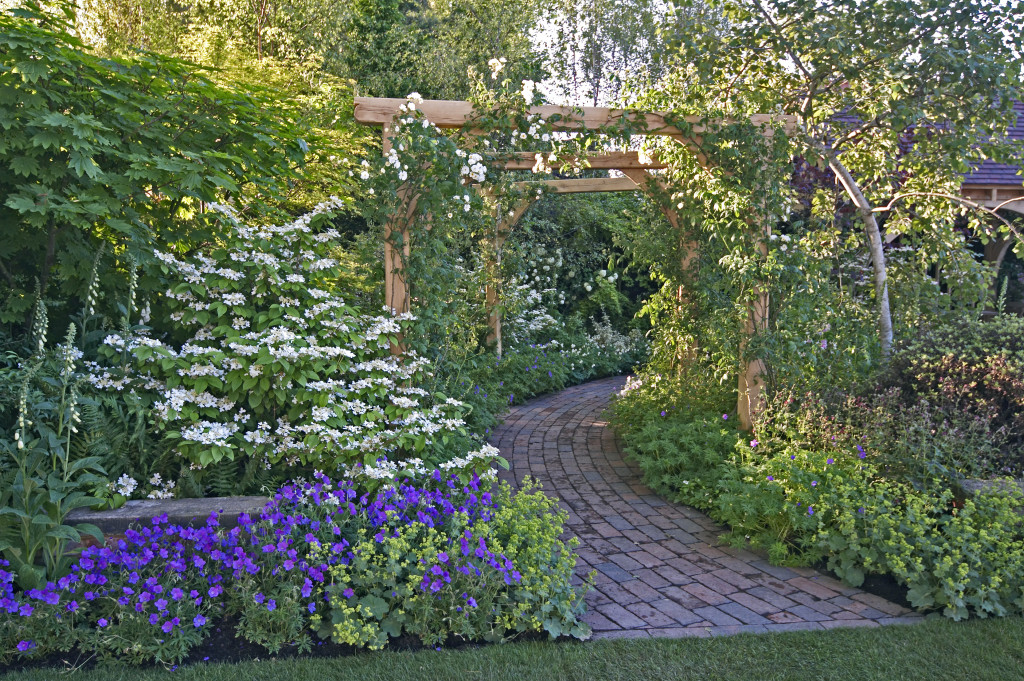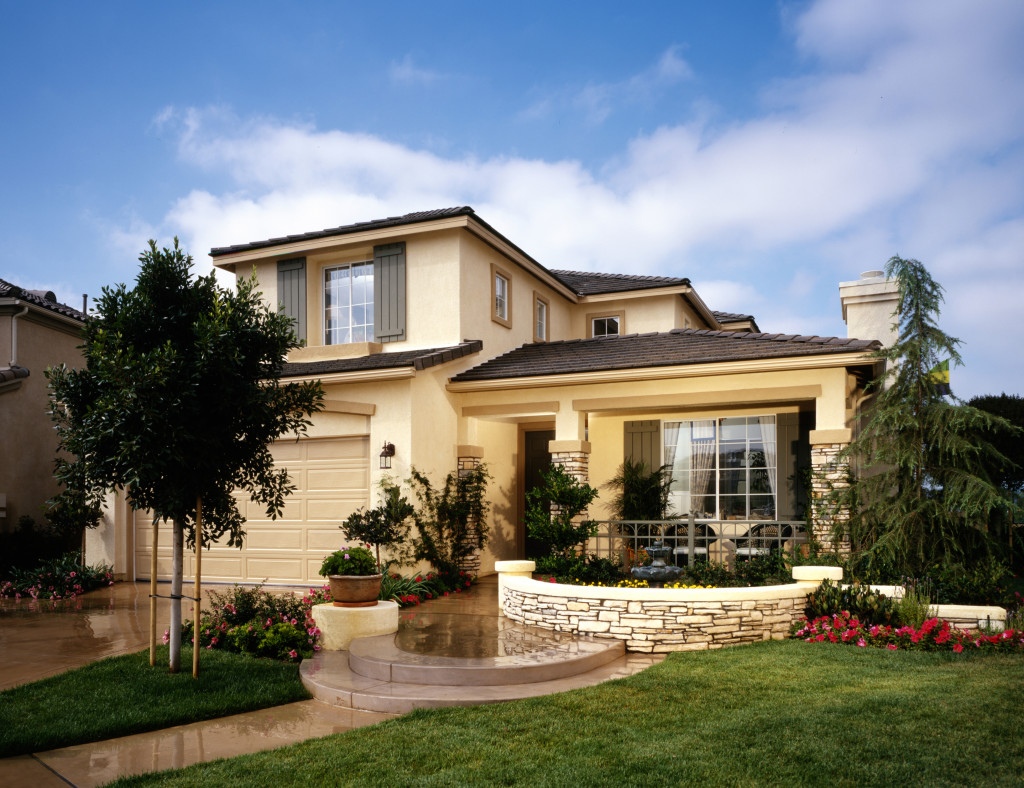- Plan your space, considering topography, climate, and soil type.
- Select a focal point that reflects your style and complements the rest of your garden.
- Play with color and texture by using a variety of plants, experimenting with colors, incorporating texture, and adding hardscape elements.
- Create pathways and zones to guide movement and create distinct areas within your landscape.
- Enhance boundary definition with professional fencing that adds structure, security, and aesthetic appeal.
As you step outside your home, the landscape that greets you can elevate your spirits or leave much to be desired. It’s not just about having a green lawn or a couple of flower beds; your landscape design is the silent but impactful communicator of your home’s overall charm and character. As a homeowner, understanding the principles of landscape design can transform your outdoor space into a serene and inviting extension of your living area. Here are five essential tips to enhance your home’s landscape design, bringing beauty, functionality, and harmony to your outdoor sanctuary.
1. Plan Your Space Wisely
Embarking on your landscaping journey, the first step is planning. Visualize how you want your outdoor space to serve you. Do you dream of a lush garden, a playground for the kids, or an elegant entertaining space? Start with a sketch, even if it’s rough. This plan becomes the canvas on which your landscape dreams are drawn.
Consider the topography of your land, the climate, and the soil type. These elements will determine not only the plants you can grow but also the layout of your space. Think about sunlight patterns throughout the day and the changing seasons. Your space should be a symphony of nature, designed with intention, where each element exists in harmony with the others.
2. Select a Focal Point

Every great design begins with a focal point or a feature that will draw the eye and anchor your landscape. This could be a sculptural element, a striking tree, an ornate garden bench, or a water feature. Your focal point should reflect your style and integrate seamlessly with the rest of your garden.
When you select a focal point, consider the scale of your space and the balance it brings to your landscape. It should stand out but not overpower; it’s about creating an area of interest that naturally leads the observer’s eye through the landscape. Placement is key—your focal point should be visible from a main viewing point, whether it’s a window from inside your home or a seating area outdoors.
3. Play with Color and Texture
To elevate your landscape design, play with color and texture. Remember, the goal is to guide the eye pleasantly across your landscape, creating a tapestry of color and texture that changes with the seasons.
Here are tips to play with color and texture:
Variety is Key
One of the secrets to a vibrant, year-round garden is variety. Include various plant types, from perennials and annuals to shrubs and trees. Each plant type brings its unique aesthetic to your garden, contributing to the overall visual variety. Consider bloom times to ensure your garden has color throughout the year.
Monochromatic to Polychromatic
When considering colors, it’s vital not to shy away from experimenting. Monochromatic gardens, where you use varying shades of a single color, can create a soothing, harmonious feel. Conversely, polychromatic gardens, with a wide range of colors, can provide a lively, vibrant aesthetic. The key is to balance the colors so no single hue dominates the others.
Texture in the Mix
Texture can significantly impact the visual appeal of your garden. From the rough bark of a tree to the smooth leaves of a hosta, texture adds depth and interest to your landscape. Consider incorporating a mix of plants with different textures — coarse, medium, and fine. This variety can enhance your garden’s visual interest and provide a sensory feast.
Don’t Forget the Hardscape
While plants are the stars of your landscape, don’t overlook the role of hardscape in adding color and texture. Hardscape refers to the non-living elements of your landscape, such as rocks, bricks, or garden furniture. These elements can add contrasting textures and colors, adding depth to your outdoor space. A well-planned hardscape can guide foot traffic through your garden and create spaces for rest and contemplation.
4. Create Pathways and Zones

Pathways are the arteries of your garden, guiding movement and flow. They can be functional, decorative, or both, leading visitors through your space’s different ‘zones.’ Materials for pathways can range from gravel and stone to brick and wood, each adding a different texture and character to your garden.
Zoning is about creating distinct areas within your landscape. A dining zone, a play area, a vegetable garden, or a quiet nook for reading—each serves a purpose and adds to the overall utility of your garden. Consider how they connect and the transition spaces between them when planning zones. These zones should create a story that unfolds as one moves through the space.
5. Enhance Boundary Definition
A well-defined boundary ensures privacy and can be a substantial aesthetic addition to your garden. This is where professional fencing comes into play. A well-crafted fence provides structure and security to your property, delineating your space without obstructing the view. If you visit a client’s website that offers homes for sale, you’ll notice that properties with well-designed fencing stand out and present a sense of completeness.
Your fencing can reflect the style of your home and garden. From sleek modern panels to rustic wood, your chosen materials and design set the tone for your outdoor space. Beyond just a barrier, professional fencing can become a backdrop for climbing plants, a frame for your garden, or even a canvas for outdoor art. It’s not just a boundary; it’s an integral part of your landscape design.
To Wrap It Up
Your home’s landscape is the natural extension of your personal living space. You can create an inviting and memorable outdoor area with careful planning, a well-chosen focal point, and playful use of color and texture. By designing pathways and zones, you ensure that each corner of your garden is enjoyed to its fullest. And with professional fencing, you provide that essential finish, framing your property like its masterpiece. Remember, your landscape is a reflection of your taste and style; make it unique, make it beautiful, but most importantly, make it yours.



